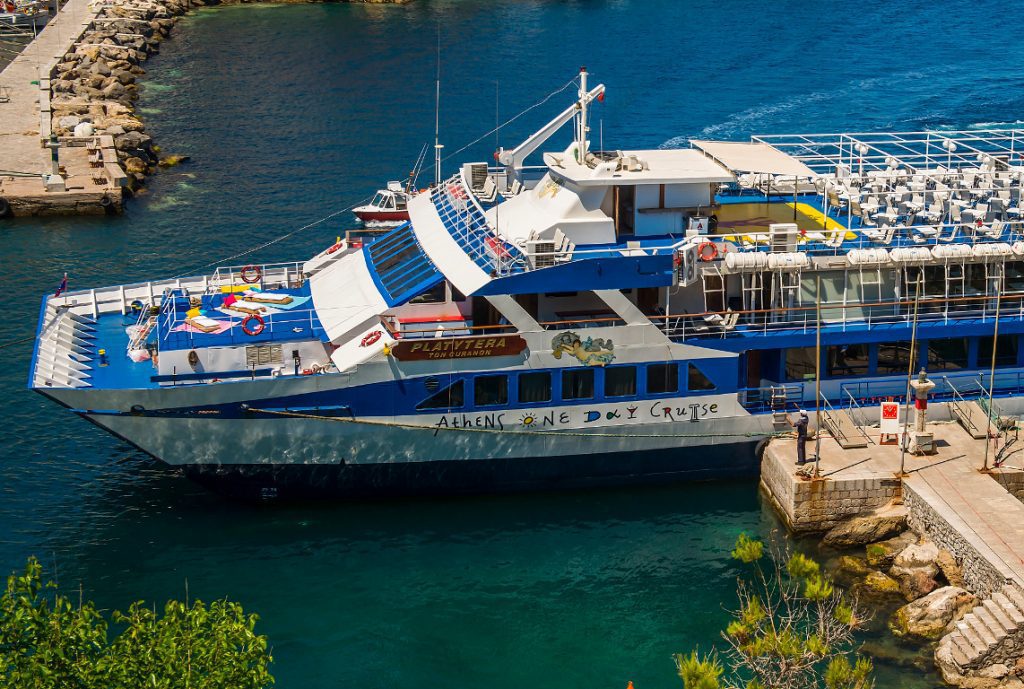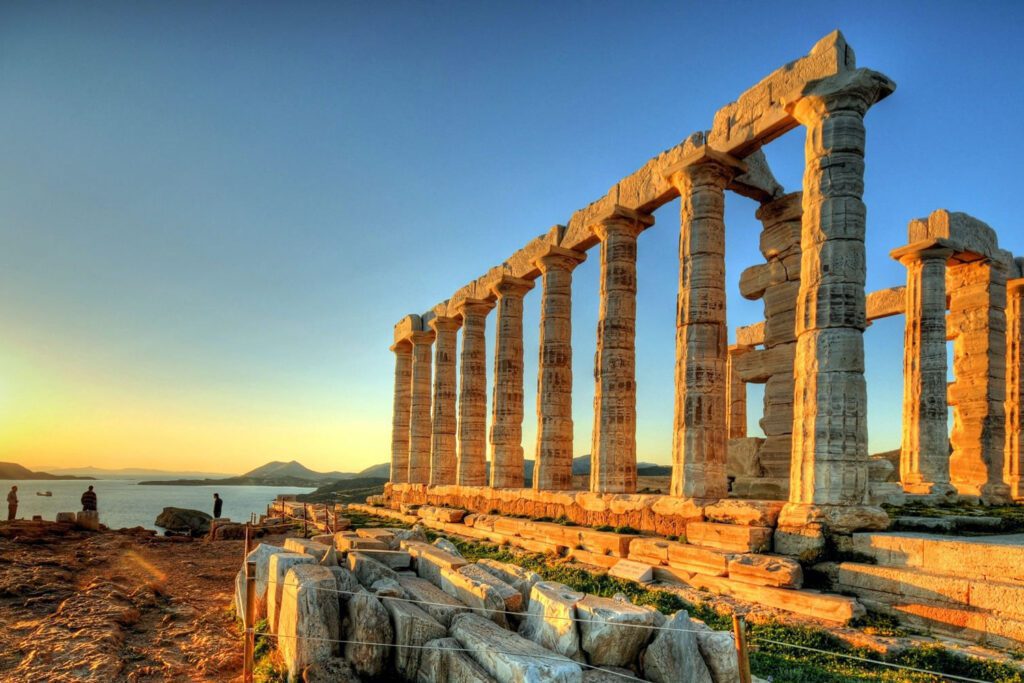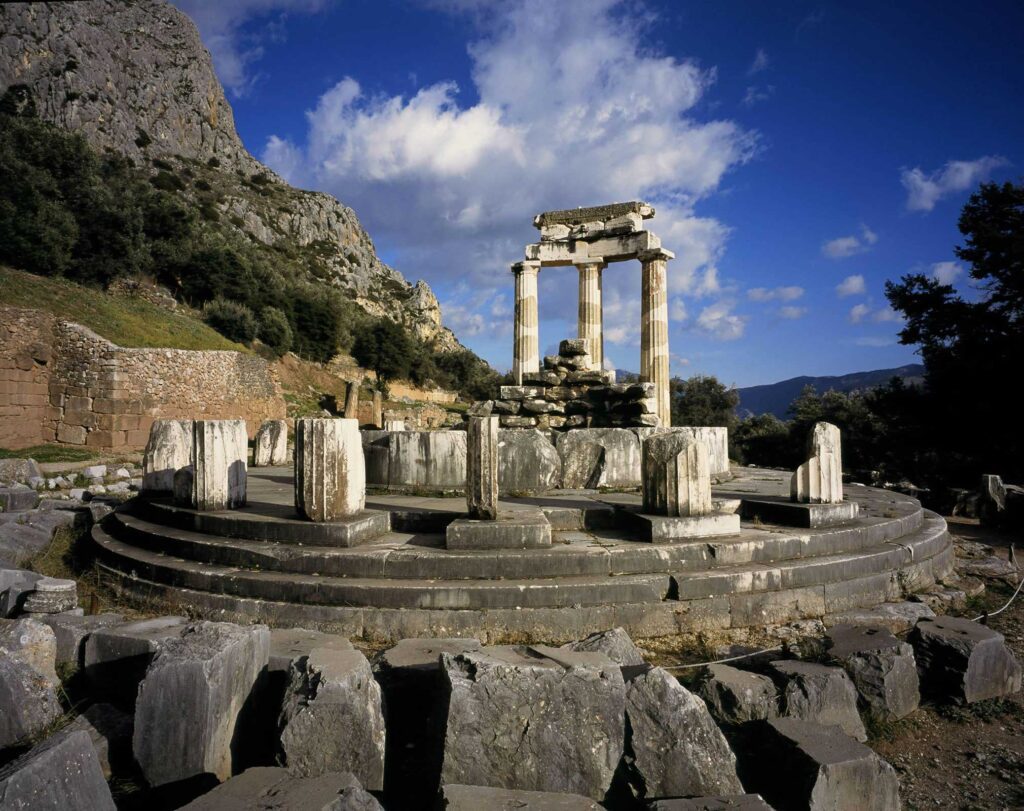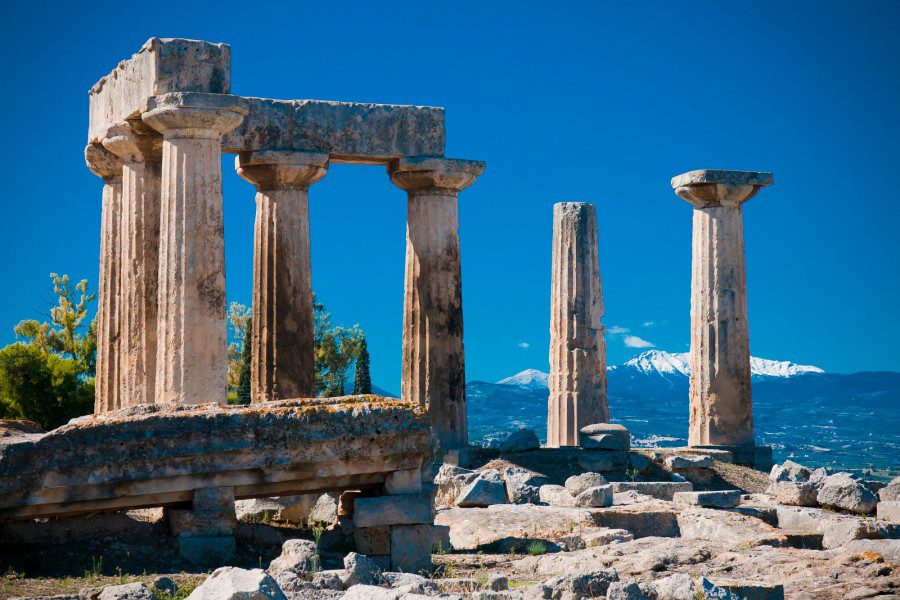Introduction
Best day trips from Athens: Athens is truly one of the great cities in the world and one of the most significant cradles of civilization. There is a LOT to see and do in Athens and we usually recommend 3 days as a minimum stay to make the most of this incredible city. If, however, you have another day or two on your hands, or perhaps you have visited previously, then doing one of the fantastic day trips from Athens to one of the many wonders close by is a must. Ancient ruins, famous archeological sites, beautiful beaches, authentic islands, mountain monasteries and much more!
Saronic Islands Cruise
Aegina, Hydra and Poros are the most well-known of the Saronic Islands, an archipelago in Greece that was named after the gulf in which the islands are located. Traveling to the Saronic islands from Athens takes between 10 minutes and 2 hours by ferry and allows you to explore the natural beauty and splendor of the islands, which also have an important significance in Greek history and mythology. Aegina is excellent for family vacations, while Hydra, which has no cars or scooters can be a great place to explore secluded squares and get lost in a place that time forgot. Poros features a lively waterfront with cafes, restaurants and shops, as well as a curious combination of picturesque cobbled streets and modern entertainment venues that can be great for people of all ages and backgrounds.

Other islands in the Saronic group include Agistri and Moni which are both an absolute delight to explore.
The Athenian Riviera & Cape Sounion
The Southern suburbs of Athens sit along a beautiful coast area known colloquially as the Athenian Riviera. Here you find a number of high-end neighborhoods including Glyfada and Vouliagmeni which boast great beaches, restaurants, bars, shops, and marinas. The southernmost tip of the Attic peninsula is the place where you can find Cape Sounion, a place of beauty and historic wealth which was mentioned in Homer’s Odyssey as the place where the various Greek commanders arrived back after serving in Troy.

The Deme of Sounion, the Temple of Poseidon and the Temple of Athena are the main attractions of the region, featuring monuments, pillars, ruins, and sculptures dating back more than 2,000 years that are a real treasure for anyone interested in history and archaeology.
Meteora by train

Meteora is one of the most intriguing places in Greece. Featuring rock formations that are completely unique, having formed more than 60 million years ago, as a series of rock movements pushed the seabed up to form a high plateau. Meteora was first inhabited by various natives between 50,000 and 5,000 years ago. Today it is one of the most well-known places in Greece, and an area well worth exploring – it truly is remarkable! You can get to Meteora yourself from Athens by train or bus, but if you do that I really recommend you stay at least overnight as it’s a very long day. Once you’re there, you can experience Meteora and its numerous caves and rock formations through one of the numerous hiking tours or train tours, or by choosing a trip that explores Meteora’s hermit caves.
Mythical Delphi

The ruins of Delphi tell of an extremely old story about a place of significance in the history of Greece. The area was inhabited as early as 4000 BC, and is home to ruins of neolithic settlements, a cave where early rituals took place and a Mycenaean settlement featuring a cemetery. Here you can also find the first remnants of the cult of Apollo, dating back to the 8th century BC, where the ruins of the first temples of Apollo and Athena can be found, linked to some of the other Greek gods, including Artemis, Poseidon and Hermes.
Visitors that visit Delphi from Athens can explore two separate sanctuaries, which are dedicated to Apollo and Athena. The well-known Temple of Apollo is located in the central area of the site, is the most important attraction of all. Many votive monuments are also found scattered among the buildings, having been dedicated to Delphi by various cities and wealthy individuals
Mycenae
 If you want to learn about Greek history, there is no better place than Corinth – or Korinthos, as the Greeks refer to it. Corinth is a veritable gem where you can explore everything from Greek culture and religion, in the Ecclesiastic Museum and the famous Historic-Folklore Museum, to the municipal library on 84 Pilarinos Street and the mythical archaeological site of the ancient city of Korinthos, featuring such places as the temple of the goddess Tyche, the courtyard of Apollo and the Lerna fountain.
If you want to learn about Greek history, there is no better place than Corinth – or Korinthos, as the Greeks refer to it. Corinth is a veritable gem where you can explore everything from Greek culture and religion, in the Ecclesiastic Museum and the famous Historic-Folklore Museum, to the municipal library on 84 Pilarinos Street and the mythical archaeological site of the ancient city of Korinthos, featuring such places as the temple of the goddess Tyche, the courtyard of Apollo and the Lerna fountain.
Getting to Corinth will take you through a journey of about 70 km along the highway from Athens and takes just over an hour. Nearby is the world-famous Corinth Canal that dissects the Peloponnese from mainland Greece. A feat of great engineering this canal had a considerable impact on trade and the world economy when it was built.
About 30 minutes south of Corinth the ancient of Mycenae is known as the home to the legendary Kings Atreus and Agamemnon and is considered one of the most important archaeological finds in all of Greece. The site houses the majestic Lions Gate, along with other important sites like the royal complex, the six tombs, the treasure of Atreus and the Heraion of Argos.Just south of Mycenae is the beautiful seaside town of Nafplio, once the first capital of Greece and a charming and quite authentic destination much favored by Athenians. To the East, you can find Epidaurus and its famous ancient theater, which houses the annual Epidaurus Festival, a celebration that takes place as a series of theater and dance performances. Considered one of the most technically perfect amphitheaters in the world and in excellent condition.
Corinth

Experience the historic significance of ancient Corinth with this half-day tour! Drive along the scenic coastal roads of the Saronic Gulf for a visit to Corinth and its awe-inspiring canal, where a quick stop is in order. Afterwards, you will visit ancient Corinth, a sacred place where St. Paul preached for years. The remains of the ancient city, which include the Agora (market place) and Apollo’s Temple (6th century B.C.) exhibit the richness and importance Corinth had during antiquity. Another short stop will be made at the site of the ancient port of Kehries, where St. Paul disembarked and this will mark our return to Athens.










